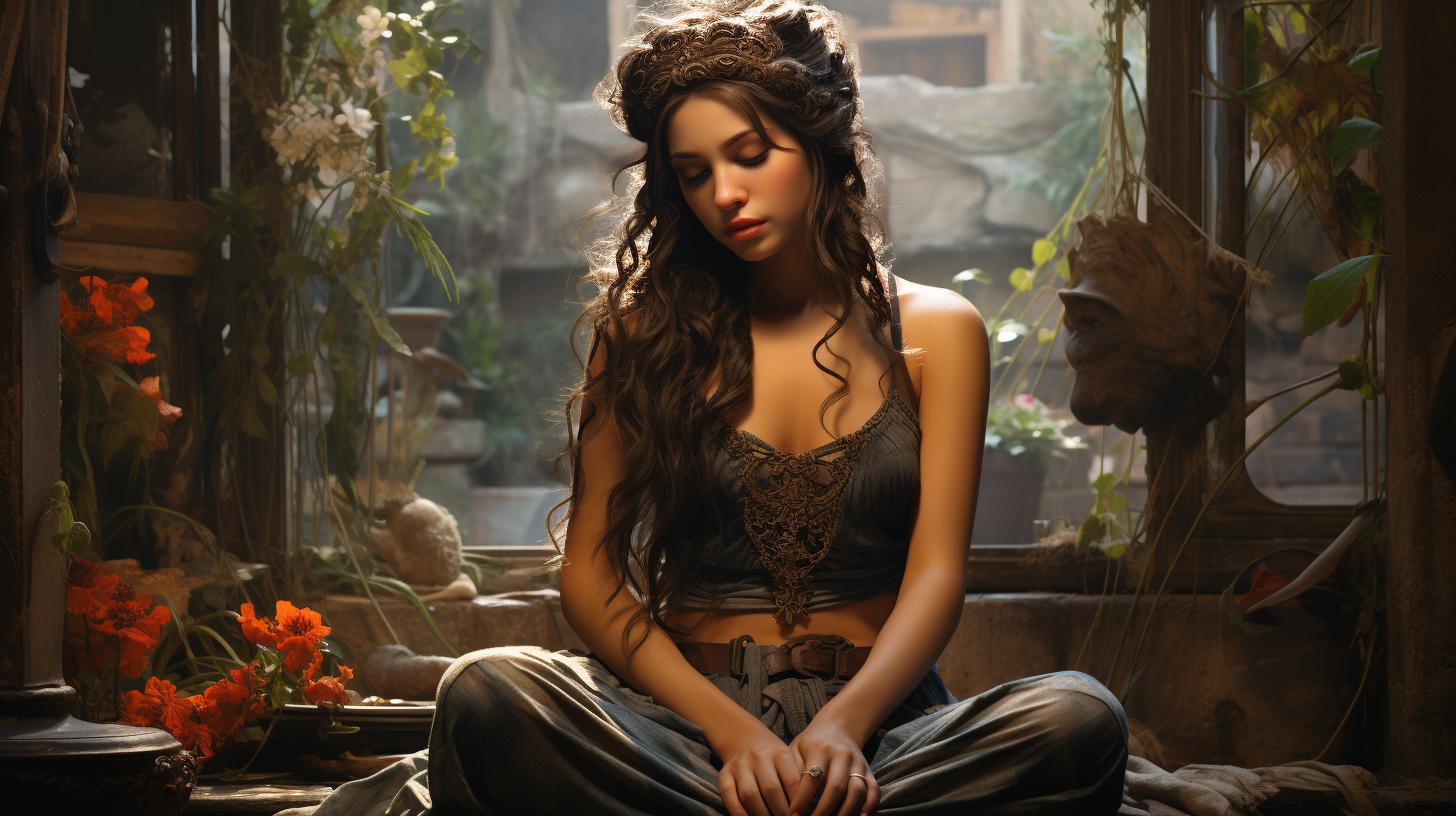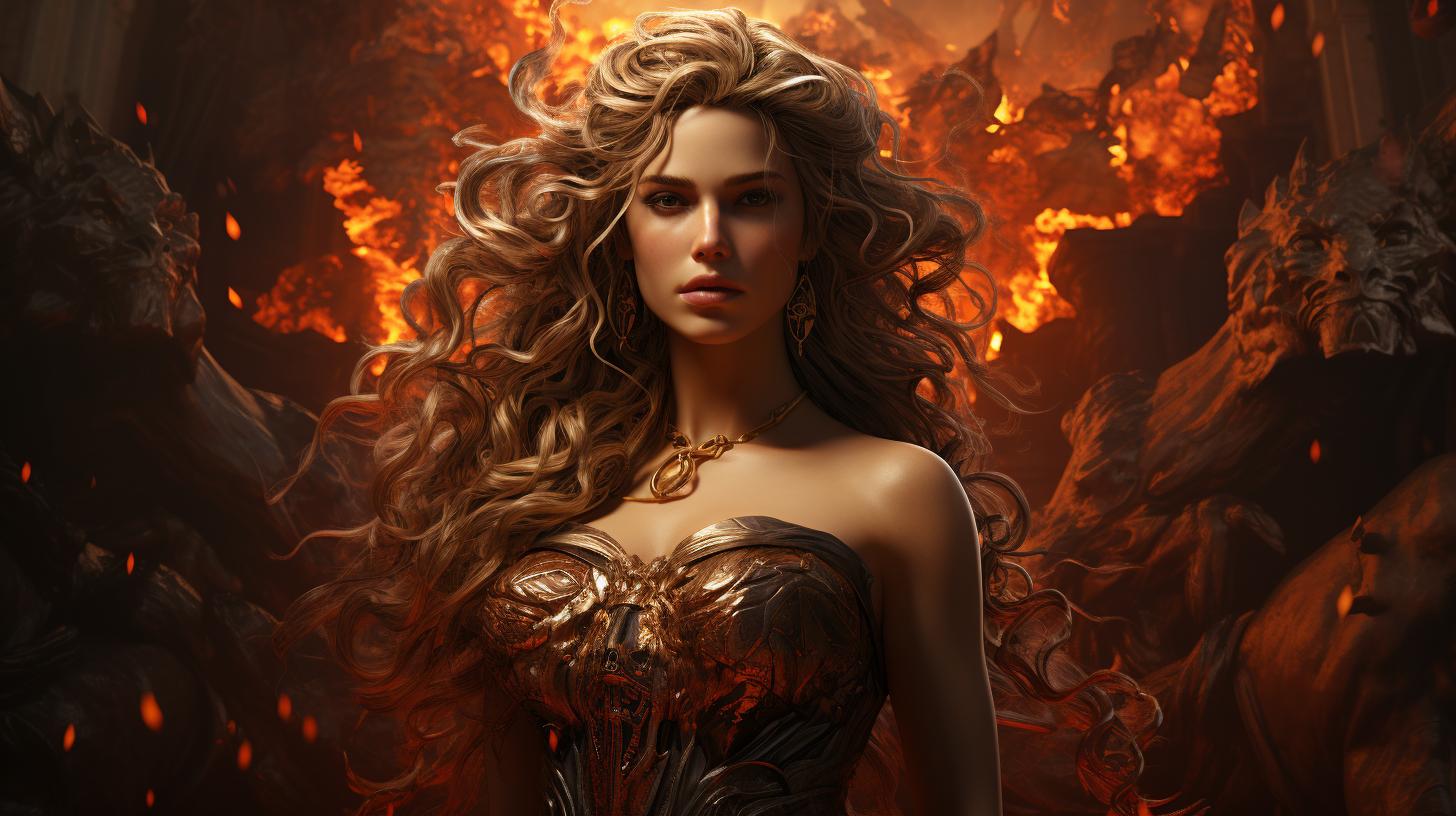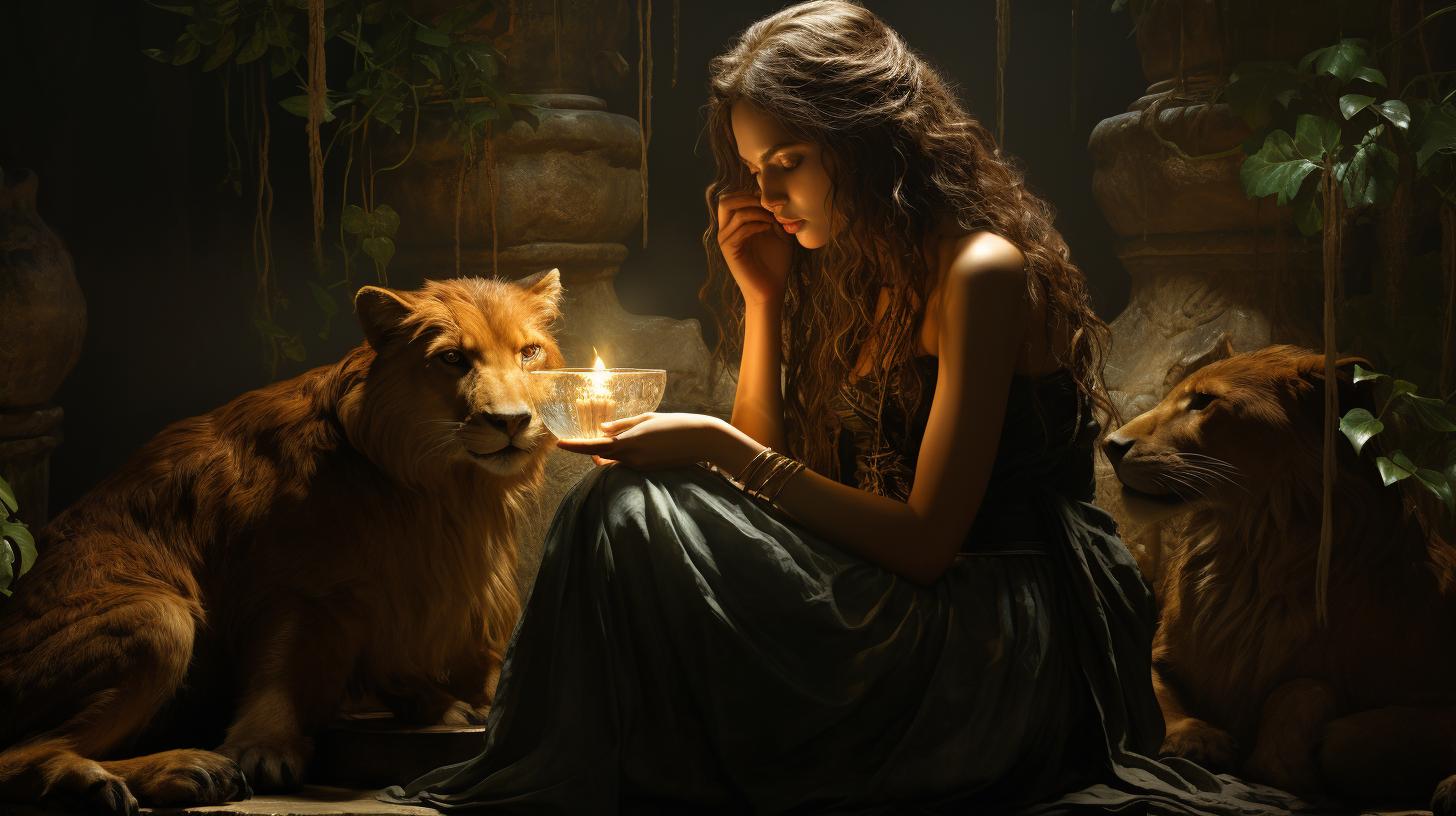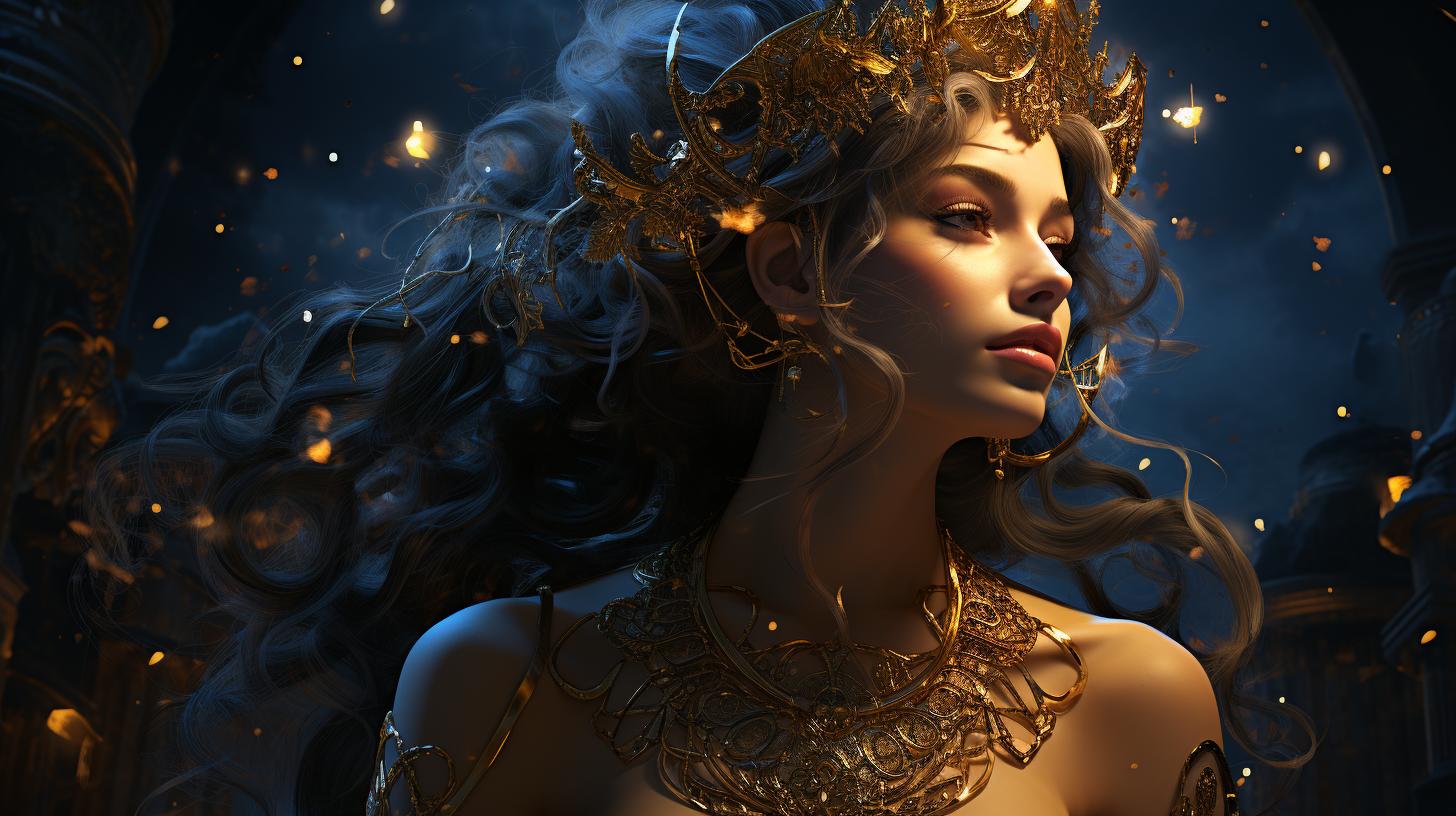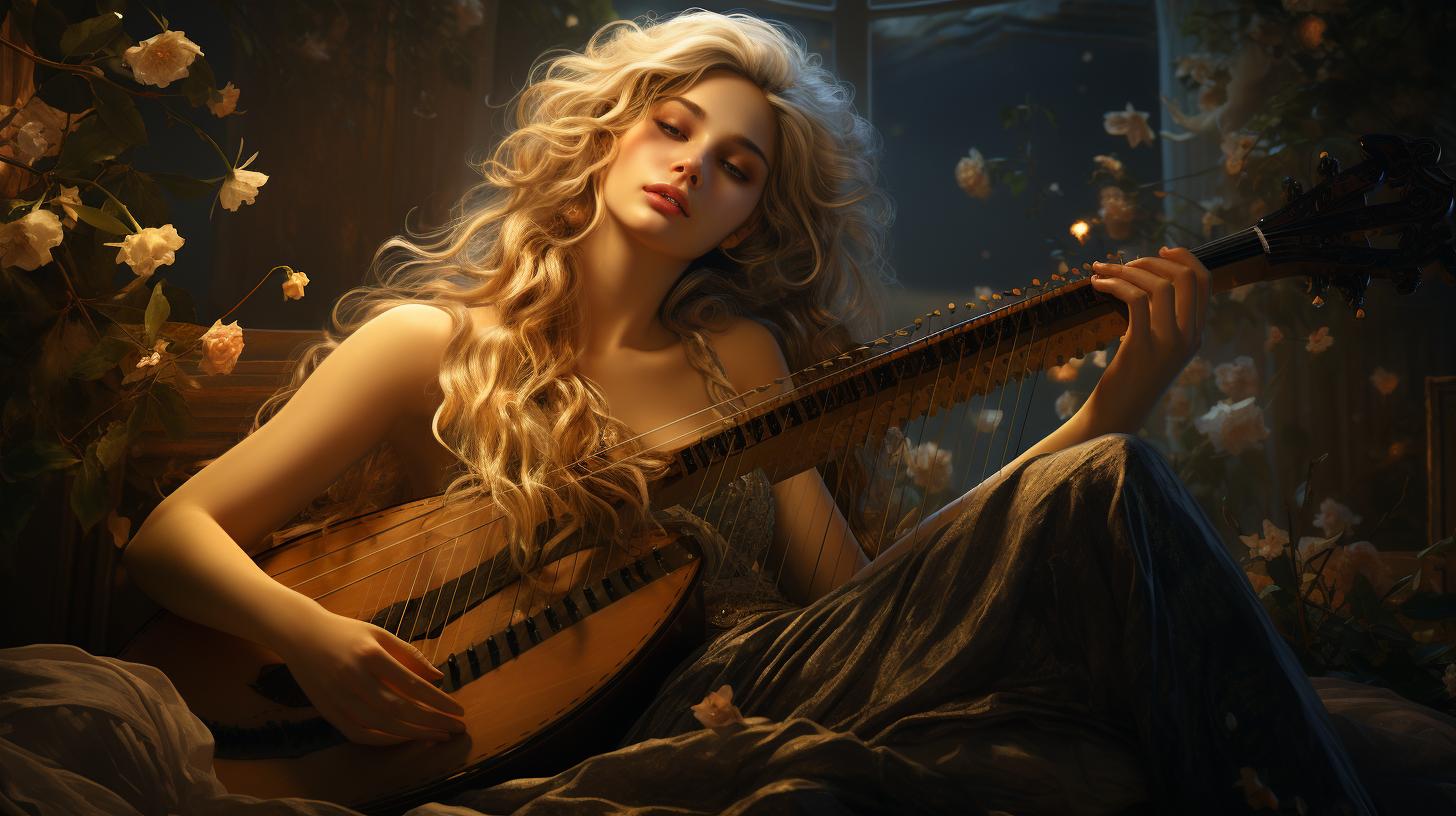Unveiling the Charms of Polyhymnia: Exploring the Fascinating Greek Mythology of the Muse
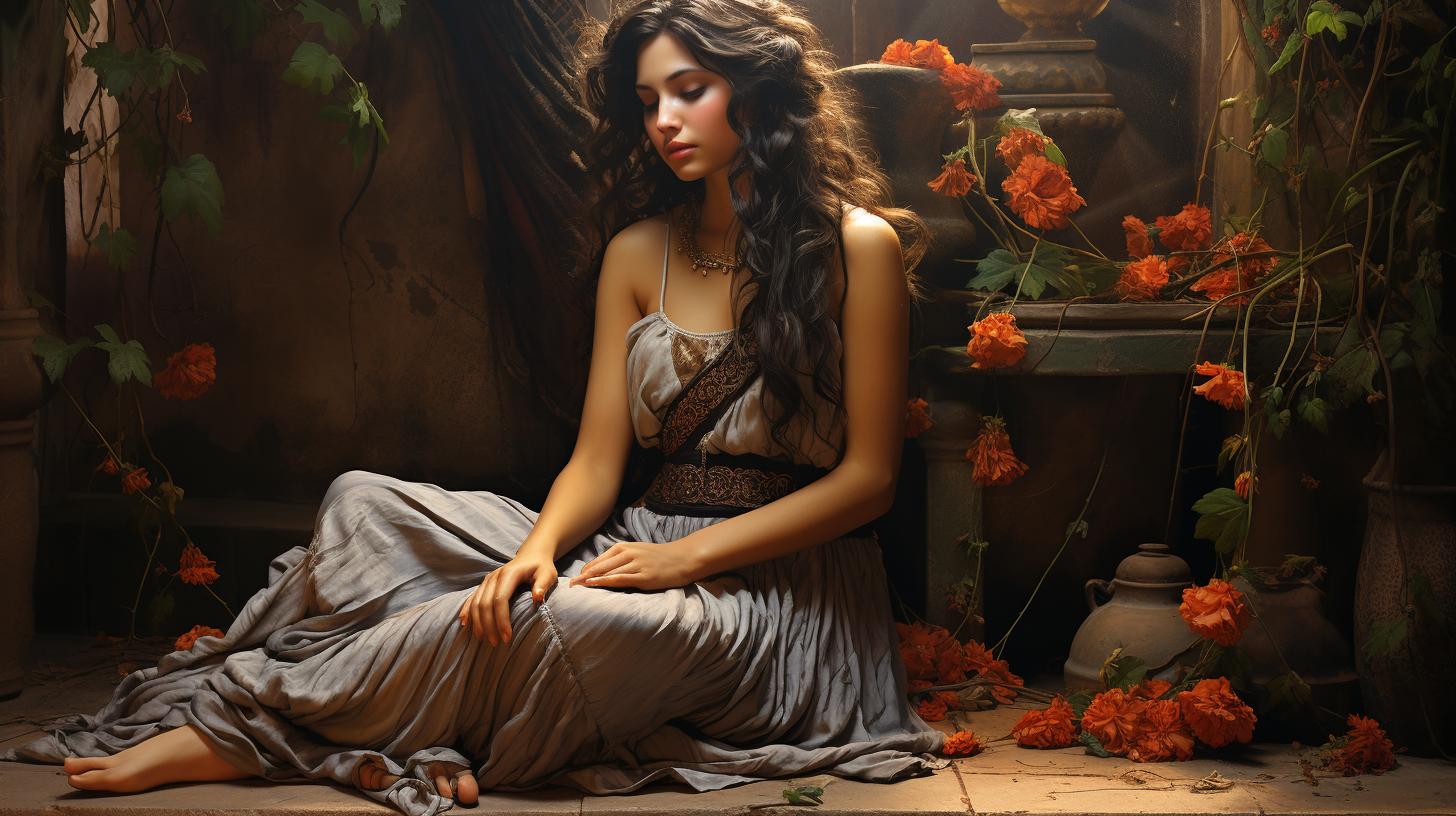
Polyhymnia, the Greek muse of religious hymns, lyrical poetry, dance, and music, holds a significant place in Greek mythology. She is known as the daughter of Zeus and Mnemosyne, credited with inventing the lira.
Renowned classical authors like Hesiod, Pseudo-Apollodorus, and Ovid have mentioned her in their works. Polyhymnia’s serene and contemplative depiction, adorned with a veil and long cloak, adds to her enigmatic aura.
Believed to possess divine inspiration and prophetic abilities, she and her fellow muses were revered for their immortal healing powers and transformative influence. Additionally, an asteroid called Polyhymnia has been named in her honor in the realm of astrology.
The Origins and Lineage of Polyhymnia
Polyhymnia, one of the muses of Greek mythology, has a fascinating lineage and a significant role in ancient culture. Let’s delve into the origins and stories surrounding this divine figure.
Polyhymnia’s Parentage: Zeus and Mnemosyne
Polyhymnia, also known as Polymnia, is the daughter of Zeus, the king of gods, and Mnemosyne, the goddess of memory. Born from this divine union, Polyhymnia possesses a special connection to the realms of both creativity and intellect.
The Mythical Invention of the Lira
An intriguing aspect of Polyhymnia’s story is her association with the invention of the lira, a musical instrument. Legend has it that she created this enchanting instrument, which became a symbol of artistic expression and harmony.
The lira’s rich melodies were believed to inspire religious hymns, lyrical poetry, and the graceful movements of dance.
According to ancient tales, Polyhymnia’s skillful craftsmanship and divine inspiration guided her in the creation of the lira, making her a muse not only for poetry and dance but also for the world of music.
The Role and Influence of Polyhymnia
Polyhymnia, the Greek muse, played a pivotal role in various creative aspects, channeling her divine inspiration into the realms of religious hymns, lyrical poetry, dance, and music. Her multifaceted influence encompassed a wide range of artistic expressions.
Polyhymnia as the Muse of Religious Hymns
Among her various roles, Polyhymnia held a special place as the muse of religious hymns. She guided and inspired the hymn writers, infusing their compositions with spiritual significance and reverence. Through her divine presence, Polyhymnia’s influence permeated sacred rituals, bringing forth harmonious melodies and heartfelt devotions.
The Significance of Polyhymnia in Lyrical Poetry
Not limited to hymns alone, Polyhymnia also held significance in the realm of lyrical poetry. Poets seeking inspiration turned to her, invoking her name to unlock the poetic potential within them.
As the muse of poetry, her ethereal touch bestowed upon them the power to craft verses that captured the essence of emotions, love, and profound human experiences.
Polyhymnia’s Connection to Dance and Music
As a muse, Polyhymnia’s influence extended to the realms of dance and music as well.
Dancers and musicians sought her favor, believing that her guidance would elevate their performances to transcendent heights. Through the delicate movements of dance and the enchanting melodies of music, Polyhymnia’s presence intertwined with artistic expressions, intertwining rhythm, and meaning.
In summary, Polyhymnia’s pivotal role spanned from guiding the creation of religious hymns and lyrical poetry to infusing dance and music with her divine essence. Her influence within the realms of these artistic expressions was indescribable, shaping and inspiring generations of artists throughout Greek mythology and beyond.
References to Polyhymnia in Classical Literature
Throughout various works of classical literature, Polyhymnia, the muse of religious hymns, poetry, dance, and music, has been mentioned by esteemed authors, shedding light on her significant role in Greek mythology.
Hesiod’s and Pseudo-Apollodorus’ Mentions of Polyhymnia
Polyhymnia finds her place among the nine muses in the writings of Hesiod and Pseudo-Apollodorus. Hesiod, a renowned Greek poet, includes Polyhymnia as one of the divine daughters of Zeus and Mnemosyne in his famous epic poem, Theogony.
Pseudo-Apollodorus, another ancient Greek author, confirms this lineage in his work Library, affirming Polyhymnia as a member of the esteemed Muses.
Exploring Polyhymnia in Orphic Hymn and Diodorus Siculus’ Works
The Orphic Hymn, an ancient collection of religious hymns, includes a dedicated hymn to the Muses, wherein Polyhymnia is mentioned. This lyrical composition pays homage to Polyhymnia’s ability to inspire creativity and empower poets.
Diodorus Siculus, a Greek historian, attributes the name ‘Polyhymnia’ to signify ‘many praises’ and honors her as the muse responsible for bestowing fame upon immortalized writers.
Ovid’s ‘Fasti’: Tracing the Origins of May and Polyhymnia
Ovid, the Roman poet, traces the origins of the month of May and Polyhymnia in his poetic work, ‘Fasti.’ Here, Ovid narrates a story, interweaving mythology and calendar customs, explaining Polyhymnia’s connection to the month of May.
Through his vivid storytelling, Ovid enlightens readers on the mythological significance of this captivating muse.
Polyhymnia’s Depiction in Nonnus’ Epic ‘Dionysiaca’
Nonnus, a Greek poet, vividly describes Polyhymnia’s portrayal in his epic poem, ‘Dionysiaca.’ He depicts her as a nurturing mother of dance, gracefully moving her arms while silently transmitting profound meaning.
Nonnus’ portrayal accentuates Polyhymnia’s pivotal role in the artistic realm, emphasizing her association with both dance and meaningful expression.
By delving into these classical literary references, we gain a deeper appreciation for Polyhymnia’s influential presence in Greek mythology and her far-reaching impact on various artistic domains.
The Enigmatic Appearance of Polyhymnia
Polyhymnia, the intriguing muse of Greek mythology, was not only known for her diverse talents but also for her distinctive appearance.
Described with a serious and meditative figure, Polyhymnia emanated an enigmatic aura that captivated all who beheld her.
Describing Polyhymnia’s Serious and Meditative Figure
When envisioning Polyhymnia, one can imagine a figure exuding an air of contemplation and deep thought. She embodied the essence of serenity, with a demeanor that suggested profound introspection. Her presence commanded attention, as if she held an ancient wisdom waiting to be unveiled.
Polyhymnia’s Attire: Veil, Long Cloak, and Thoughtful Pose
Polyhymnia’s attire further enhanced her mysterious persona. She was often depicted wearing a veil, symbolizing her connection to the unseen realms of inspiration, as well as a long cloak that draped elegantly around her.
With a finger pressed against her lips in a gesture of silence, Polyhymnia communicated a profound sense of introspection and reflected her association with the deep contemplation of muses.
In many representations, Polyhymnia was shown resting her elbow upon a staff, further emphasizing her thoughtful demeanor.
This enigmatic pose, combined with her attire, conveyed a sense of mystique and invited observers to ponder the secrets that lay hidden within her being.
Through her appearance alone, Polyhymnia embodied the essence of meditation and evoked a sense of curiosity and reverence among those who sought to understand her role in Greek mythology.
Her enigmatic presence continues to capture the imagination and intrigue of modern audiences, reminding us of the profound depths of inspiration and wisdom that reside within the realm of the muses.
Polyhymnia’s Divine Attributes and Powers
Polyhymnia, as one of the revered muses in Greek mythology, possesses divine attributes and powers that set her apart. Let’s explore some of the remarkable aspects associated with her:
Polyhymnia’s Involvement in Divine Inspiration and Prophecy
Polyhymnia plays a vital role in channeling divine inspiration and prophecy.
It is believed that she actively participates in prayers and rituals, bestowing her followers with divine wisdom and guidance. Through her influence, poets, writers, and artists are bestowed with the ability to create profound and inspiring works.
The Immortal Nature of the Muses and their Healing Abilities
Like her fellow muses, Polyhymnia possesses immortality, existing eternally in the realm of inspiration and creativity. The muses, with their graceful songs and captivating dances, possess the power to heal broken hearts and even cure the afflicted.
Their enchanting presence brings comfort, solace, and a sense of renewal to those in need.
Transformative Powers: The Pierides’ Fateful Encounter with Polyhymnia
An intriguing myth recounts the transformative powers of Polyhymnia and her fellow muses. The Pierides, a group of mortal women who dared to challenge the muses in a creative contest, suffered a harsh consequence.
Polyhymnia, among others, transformed these women into chattering magpies, forever reminding humanity of the power and consequences of hubris.
Embodying divine inspiration, immortal grace, and transformative abilities, Polyhymnia stands as a significant figure among the muses, exemplifying their enchanting presence and their impact on Greek mythology and artistic endeavors.
Polyhymnia in Astrology: Exploring the Presence of the Asteroid
A fascinating connection between Polyhymnia and the realm of astrology has been established with the discovery of an asteroid named after her. This celestial body, known as Polyhymnia, was first identified in 1854 and has since captivated astronomers and enthusiasts alike.
Located within the asteroid belt, Polyhymnia adds an intriguing layer to our understanding of the muse’s influence. Its presence not only serves as a celestial homage to Polyhymnia but also invites us to explore the symbolic significance associated with this asteroid.
Just like the muse herself, Polyhymnia the asteroid carries an air of mystique and inspiration. Its orbit within the asteroid belt is reminiscent of Polyhymnia’s connection to music, dance, and poetic expressions in Greek mythology.
By delving into the study of Polyhymnia the asteroid, astrologers seek to unveil the cosmic energies and archetypal influences it embodies. Some interpretations suggest that individuals born under the influence of this celestial body may possess a heightened affinity for creative expression, particularly in the realms of music, poetry, and dance.
Exploring the Symbolism
As astrology continues to decode the symbolism surrounding Polyhymnia, various theories and insights emerge. The placement of Polyhymnia within the asteroid belt, situated among other celestial bodies, hints at the multi-dimensional nature of artistic inspiration and creativity.
Furthermore, the characteristics associated with Polyhymnia’s mythological persona, such as meditation, serenity, and the pursuit of divine inspiration, offer valuable guidance in understanding the astrological influences attributed to this asteroid.
The Influence of Polyhymnia in Astrological Charts
Astrologers carefully analyze the positioning of Polyhymnia within individuals’ birth charts to ascertain its influence on their lives.
The house and aspect placements of Polyhymnia provide valuable insights into the specific areas of creative expression and spiritual inspiration that may resonate strongly with each individual.
Individuals with prominent Polyhymnia placements are believed to possess a natural inclination towards artistic pursuits, displaying a deep appreciation for music, poetry, dance, and other creative endeavors.
They may find solace and inspiration by immersing themselves in the beauty of artistic expression and connecting with the divine realms.
By studying Polyhymnia in astrology, we discover a celestial connection that amplifies the muse’s influence, inviting us to explore our own artistic passions and embrace the divine inspiration that flows through each of us.
.

